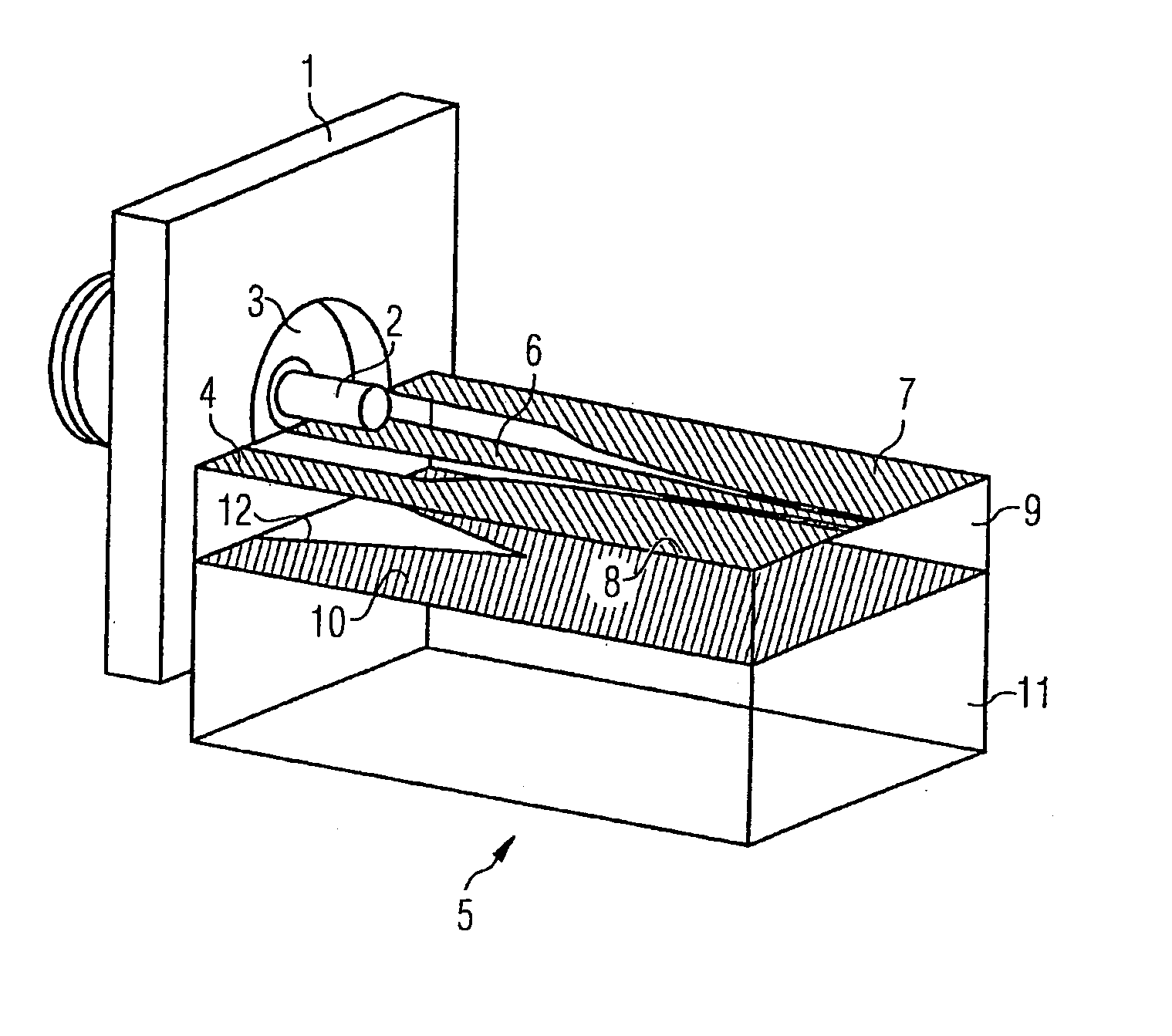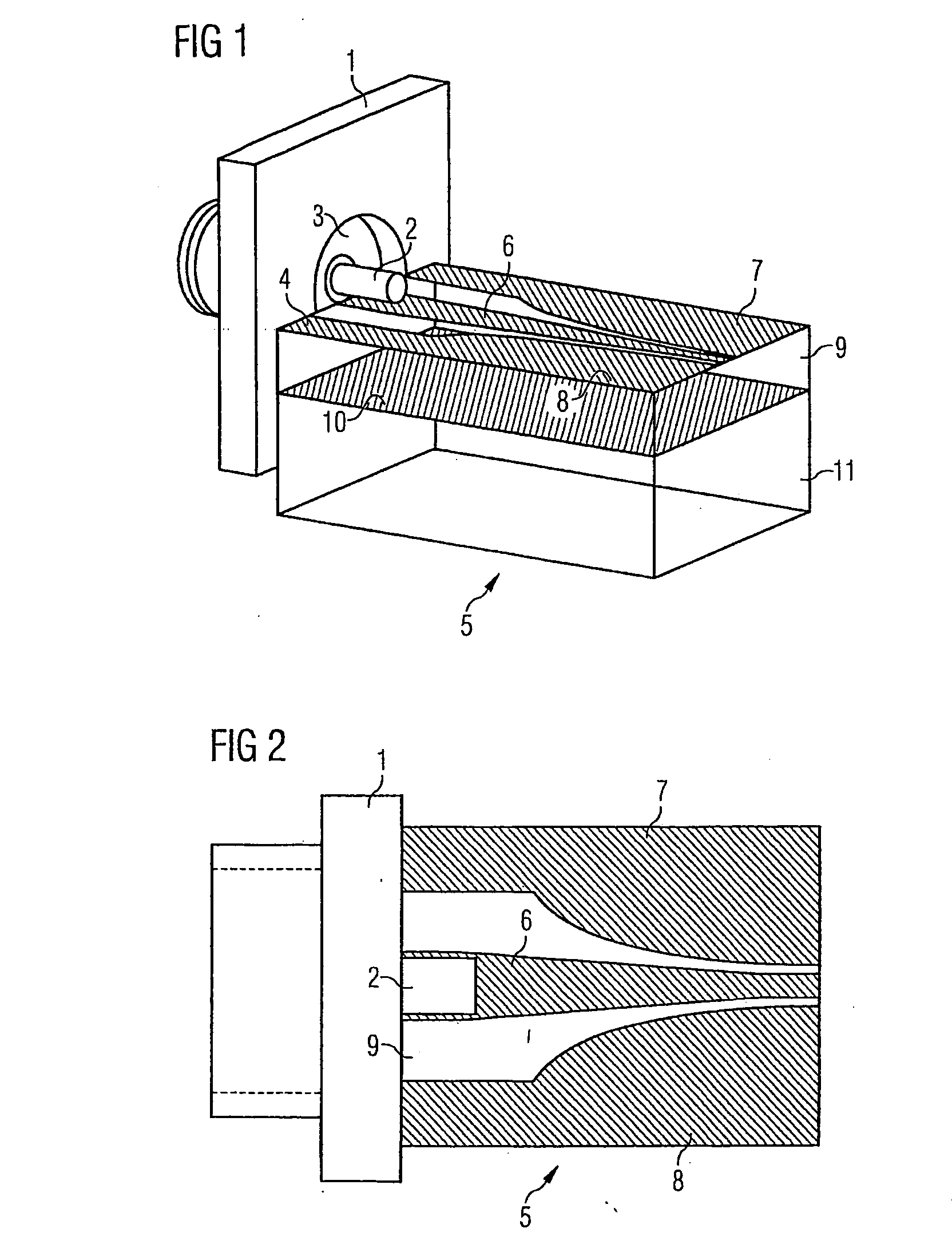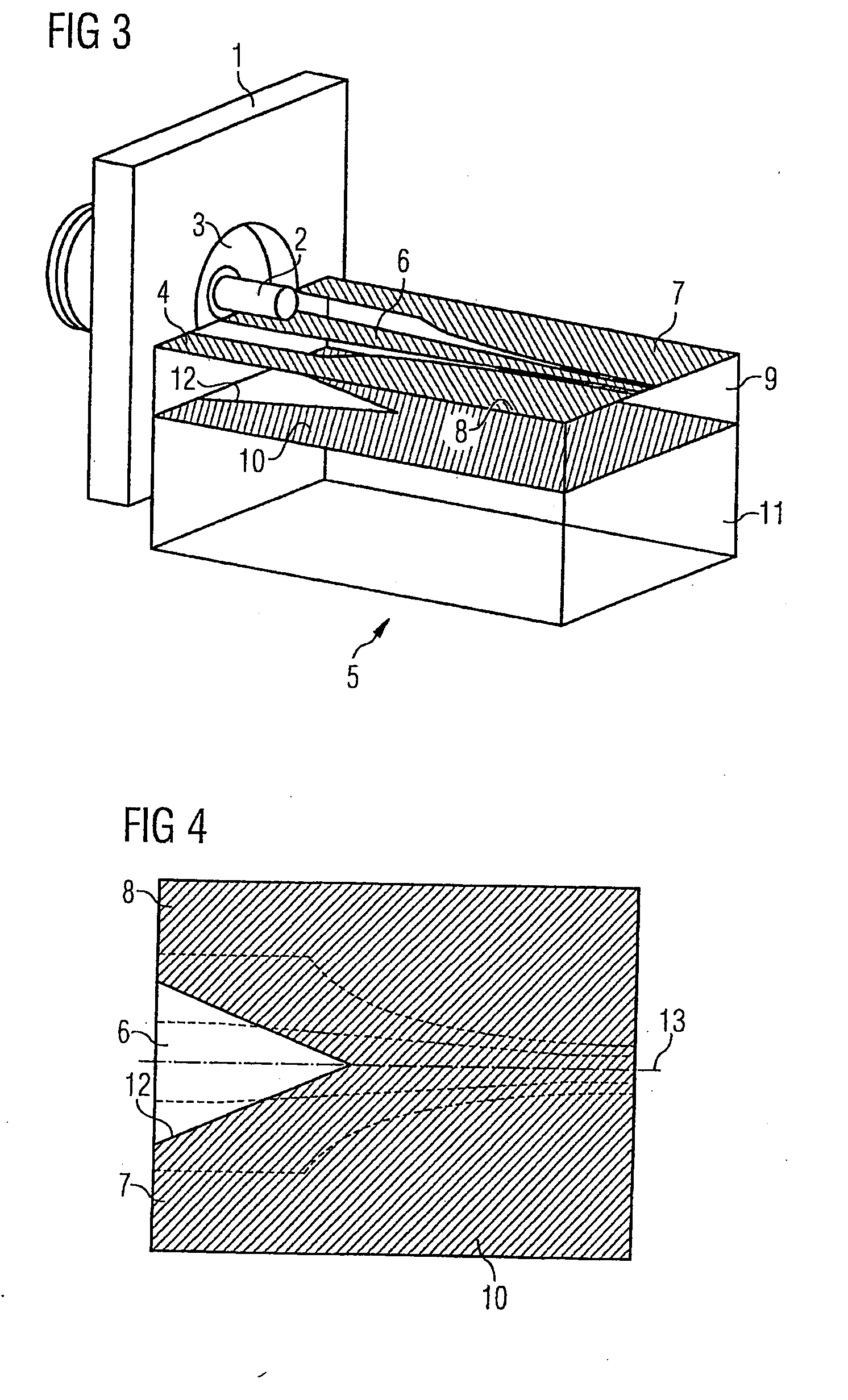Device for connecting a coaxial line to a coplanar line
a coaxial line and coplanar line technology, applied in the direction of multiple-port network, waveguide-type devices, coupling device connections, etc., can solve the problems of interference with the transmission and reflection properties at the point of connection, unsatisfactory effect, and inability to achieve the desired effect, etc., to achieve good resonance characteristics, short circuit, and increase the distance from the point of connection
- Summary
- Abstract
- Description
- Claims
- Application Information
AI Technical Summary
Benefits of technology
Problems solved by technology
Method used
Image
Examples
Embodiment Construction
[0022]FIG. 3 shows, for instance, an embodiment of a device for connecting a coaxial line to a coplanar line, in particular for connecting a coaxial plug 1 to a coplanar line 5 for the transmission of high bit rate data signals. The coaxial line is shown in FIG. 3 for instance by the coaxial plug 1 and comprises, in a similar manner to the embodiment shown in FIG. 1, a coaxial inner conductor 2, a first dielectric layer 3 and a coaxial outer conductor 4. The coplanar line 5 consists of a conductor layer (6, 7, 8), followed by a second dielectric layer 9, a metallization layer 10 and a substrate carrier layer 11. The conductor layer (6, 7, 8) consists of a coplanar inner conductor 6 and a first and a second coplanar outer conductor 7, 8, the first and second coplanar outer conductor 7, 8 being separated from the coplanar inner conductor 6 by the second dielectric layer 9, for instance. The coaxial inner conductor 2 of the coaxial plug 1 is connected to the coplanar inner conductor 6 ...
PUM
 Login to View More
Login to View More Abstract
Description
Claims
Application Information
 Login to View More
Login to View More - R&D
- Intellectual Property
- Life Sciences
- Materials
- Tech Scout
- Unparalleled Data Quality
- Higher Quality Content
- 60% Fewer Hallucinations
Browse by: Latest US Patents, China's latest patents, Technical Efficacy Thesaurus, Application Domain, Technology Topic, Popular Technical Reports.
© 2025 PatSnap. All rights reserved.Legal|Privacy policy|Modern Slavery Act Transparency Statement|Sitemap|About US| Contact US: help@patsnap.com



